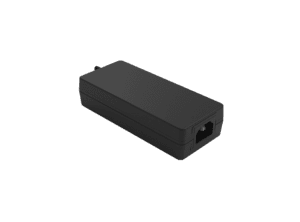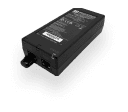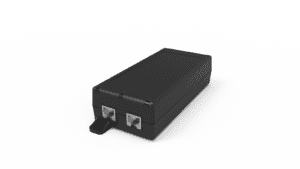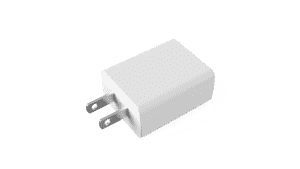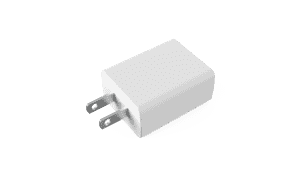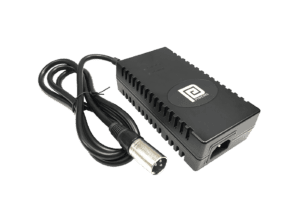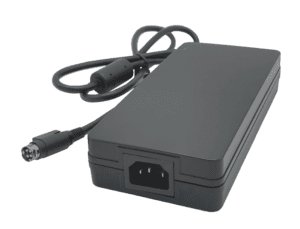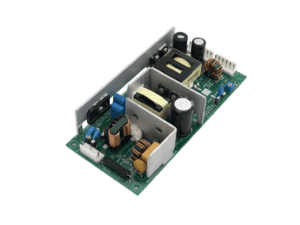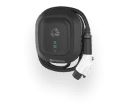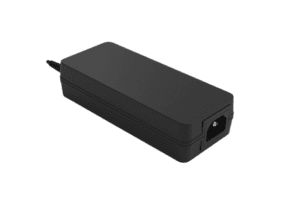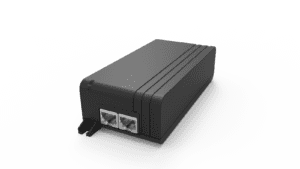BLOG
Top PoE Components: Exploring Key PoE Network Device Types
Table of contents

Power over Ethernet (PoE) technology has revolutionized the way businesses design and implement network infrastructure by combining power and data delivery over a single Ethernet cable. This efficient and cost-effective solution is particularly valuable in industrial and manufacturing environments, where minimizing complexity and maximizing reliability are paramount. Phihong USA, a leader in providing OEM and manufacturing solutions, offers a wide range of PoE components designed to meet the rigorous demands of these applications.
In this article, we will explore the various components that make up a PoE network, including switches, injectors, splitters, extenders, hubs, and management tools. Understanding these components and their roles within a network is essential for businesses looking to implement or upgrade their PoE infrastructure. Each section will provide an overview of the component, discuss its top features and benefits, and offer best practices for optimal use.
Understanding PoE Switches and Their Role
PoE switches play a role in PoE networks by providing both data connectivity and power to connected devices. They can simplify network installations by eliminating the need for separate power sources and reducing cabling requirements. Available in various configurations, PoE switches are suitable for applications ranging from small office setups to large industrial environments.
PoE switches come in different port configurations, including 8, 16, 24, and 48 ports, allowing businesses to scale their network as needed. They can deliver varying power levels depending on the PoE standard (802.3af, 802.3at, or 802.3bt), making them versatile for different device requirements. These switches are designed to provide reliable power and data connections, ensuring that all connected devices operate efficiently.
However, while PoE switches integrate power and data delivery, PoE injectors offer a more flexible solution for expanding existing networks without the need for replacing infrastructure. PoE injectors can be added to current setups, allowing businesses to power devices without the complexities of managing a larger switch network
Top Features and Benefits
- Integrated Power and Data Delivery: PoE switches combine power and data transmission in a single device, streamlining network design. However, PoE injectors can provide similar capabilities with less upfront investment and greater adaptability for specific needs.
- Scalability: While PoE switches are available in multiple port configurations, PoE injectors can easily be added to existing networks, making them a practical option for gradual expansion without overhauling current equipment.
- Enhanced Reliability: Built-in safety features, such as overload protection and power management, ensure reliable operation of connected devices. PoE injectors also provide reliable power delivery, often at a lower cost and with easier installation.
Exploring PoE Injectors: Essential Power Delivery Devices
PoE injectors are critical for adding PoE capabilities to existing non-PoE network infrastructure. These devices inject power into the Ethernet cable, enabling the delivery of power to PoE-compatible devices without the need for additional power outlets. PoE injectors are particularly useful in retrofit installations where upgrading the entire network infrastructure is impractical.
PoE injectors are available in single-port and multi-port configurations, providing flexibility depending on the number of devices that need power. They are typically plug-and-play, requiring minimal setup and configuration, which makes them an attractive solution for quick upgrades. By using PoE injectors, businesses can extend the lifespan of their existing network hardware while integrating new PoE-enabled devices seamlessly.
These devices also support various PoE standards, ensuring compatibility with a wide range of devices. This flexibility allows businesses to deploy PoE technology without needing to overhaul their entire network infrastructure, thus saving on costs and reducing implementation time. PoE injectors offer a practical and efficient solution for businesses looking to leverage PoE technology in their existing networks.
9 Key Advantages of PoE Injectors:
- Cost-Effective Upgrade: By allowing organizations to add PoE capabilities to their existing networks without the need to replace non-PoE switches, PoE injectors serve as a cost-effective upgrade solution. This approach maximizes the value of the current infrastructure while enabling businesses to harness the benefits of PoE technology.
- Versatile Application: PoE injectors provide the flexibility to power devices in locations that may not have convenient access to electrical outlets. This is particularly beneficial for devices like IP cameras, wireless access points, and VoIP phones, enabling optimal placement without the constraints of traditional power sources.
- Flexibility and Scalability: PoE systems can easily scale to accommodate additional devices, making them suitable for growing businesses. Multi-port injectors facilitate the expansion of PoE networks by supporting multiple devices simultaneously. Additionally, the flexibility in design allows for easy relocation and addition of devices as needed, ensuring that the network can adapt to evolving demands.
- Safety Assurance: PoE injectors are equipped with built-in safety features designed to protect both the powered devices and the network infrastructure. These protections include surge protection, overload protection, and short-circuit prevention, ensuring secure power delivery and reducing the risk of damage.
- Remote Device Management: Many PoE injectors offer remote management capabilities like SNMP, enabling IT administrators to monitor, control and fix connected devices from a centralized location. This functionality includes real-time status updates, troubleshooting capabilities, and reset or power-cycle a device remotely if it becomes unresponsive.
- Non-Disruptive Installation: PoE injectors can be seamlessly integrated into existing networks without necessitating significant changes to the current infrastructure. This feature minimizes downtime and disruption during installation, allowing businesses to maintain their operations with minimal interruptions.
- Reduced Installation Costs: The installation of PoE systems can often be carried out by network technicians, who typically charge less than electricians for their services. This can result in substantial savings on installation costs, making PoE injectors an economically viable option for organizations looking to upgrade their network capabilities.
- Easy Replacement: In the event of a malfunction, PoE injectors can be easily replaced, allowing for quick restoration of service. In contrast, if a PoE switch fails, the entire system may need to be replaced, leading to longer downtime for all connected devices. This ease of replacement not only minimizes disruptions but also ensures that businesses can maintain their operations with greater efficiency.
- Improved Network Reliability: PoE injectors typically have a lower failure rate than switches, contributing to overall network reliability. Their simplicity in design means fewer points of potential failure, which can help maintain a stable network environment, reducing the likelihood of outages caused by equipment malfunctions.
The Importance of PoE Splitters in Network Design
PoE splitters play a crucial role in networks where some devices require separate power and data inputs. These devices split the power and data signals from the Ethernet cable, allowing non-PoE devices to connect to a PoE network. PoE splitters are essential for integrating legacy devices into modern PoE networks, ensuring compatibility and extending the life of existing equipment.
PoE splitters are particularly useful in scenarios where replacing non-PoE devices with PoE-enabled ones is not feasible due to cost or logistical reasons. They enable businesses to leverage their current hardware while transitioning to a PoE infrastructure. By splitting the power and data, these devices ensure that older equipment remains functional and compatible with the latest network technology.
Additionally, PoE splitters come in various power outputs, making them suitable for different types of devices. They are easy to install and provide a seamless integration into the existing network, allowing businesses to upgrade their infrastructure without significant disruptions. PoE splitters thus provide a cost-effective solution for businesses looking to enhance their network capabilities.
Top Features and Benefits
- Compatibility: PoE splitters enable non-PoE devices to connect to PoE networks, enhancing network flexibility.
- Cost Savings: By integrating existing non-PoE devices, splitters help avoid the cost of replacing equipment.
- Easy Integration: These devices are simple to install and configure, making it easy to incorporate them into existing networks.
- Versatility: PoE splitters can be used in various applications, from IP cameras to wireless access points and VoIP phones.
PoE Extenders: Enhancing Network Reach
PoE extenders are used to extend the reach of PoE networks beyond the standard 100-meter Ethernet cable limit. These devices regenerate the power and data signals, allowing them to travel further distances without degradation. PoE extenders are ideal for large-scale installations where devices are spread out over a wide area, such as in industrial complexes or large office buildings.
By using PoE extenders, businesses can connect devices that are located far from the central network switch without sacrificing performance. These extenders ensure that both power and data signals are strong and stable, providing reliable connectivity across long distances. This capability is particularly valuable in environments with extensive infrastructure, such as manufacturing plants or large campuses.
PoE extenders also support daisy-chaining, which allows multiple extenders to be connected in series, further extending the network reach. This feature provides flexibility in network design, enabling businesses to create expansive networks that can accommodate a wide range of devices. PoE extenders thus play a crucial role in ensuring that network connectivity is maintained across large areas.
Top Features and Benefits
- Extended Reach: PoE extenders can extend network reach up to several hundred meters, making it possible to connect devices in distant locations.
- Enhanced Signal Integrity: These devices regenerate power and data signals, ensuring reliable performance over long distances.
- Flexibility: PoE extenders can be used in various applications, from security camera installations to networked lighting systems.
- Cost Efficiency: By eliminating the need for additional power sources or separate networks, extenders reduce installation and maintenance costs.
PoE Media Converters: Bridging Network Gaps
A PoE media converter is a device that bridges different types of network media while also providing Power over Ethernet (PoE) capabilities. It converts one type of network connection (such as fiber optic) to another type (such as twisted-pair Ethernet), and simultaneously delivers power over the Ethernet cable to PoE-enabled devices. Fiber cables allow longer runs than traditional copper cables, so this combination of media conversion and PoE functionality makes PoE media converters versatile and useful in various long-distance networking scenarios.
Top Features and Benefits:
- Versatile Connectivity: Enables the integration of different network media types, such as fiber to Ethernet.
- Extended Reach: Facilitates long-distance data transmission, leveraging fiber optics for greater distances.
- Power Delivery: Provides PoE capabilities, delivering power to devices over the Ethernet connection.
- Simplified Network Design: Reduces the need for multiple devices by combining media conversion and PoE functionality.
- Cost Efficiency: Minimizes the need for additional power sources and infrastructure changes.
PoE-to-USB Converters: Expanding Power Options
A PoE-to-USB converter is a device that converts power and data through an Ethernet cable to a USB output, allowing USB-powered devices to be powered through an Ethernet cable. This is particularly useful for deploying USB devices like tablets, smartphones, webcams, or IoT gadgets in locations where traditional power sources are unavailable or inconvenient. By leveraging PoE infrastructure, these converters simplify installations and reduce the need for additional wiring.
Top Features and Benefits:
- Expanded Power Options: Converts PoE to USB, enabling the use of PoE infrastructure to power USB devices.
- Installation Flexibility: Allows deployment of USB devices in locations without traditional power outlets.
- Simplified Wiring: Reduces the need for additional power cables by utilizing existing Ethernet infrastructure.
- Device Compatibility: Supports a wide range of USB-powered devices, enhancing network versatility.
- Cost Savings: Decreases installation and maintenance costs by minimizing additional wiring and power sources.
CLIENT'S QUOTE
Phihong's Power-Over-Ethernet solutions have transformed our network, boosting efficiency and reducing costs. Their seamless integration has simplified both installation and maintenance.
Explore More with Phihong USA
As we conclude our exploration of PoE technology, it’s evident how these innovations are streamlining power and data integration across various industries. Phihong USA stands at the forefront of this technological advancement, offering a diverse range of power solutions designed to meet the evolving needs of modern industries.
Phihong USA’s extensive product lineup includes:
- Power over Ethernet (PoE) Solutions: Delivering reliable power and data transmission over a single cable, ideal for simplifying network installations and reducing costs.
- AC/DC Adapters and Power Supplies: From compact adapters to industrial-grade power supplies, Phihong provides solutions that ensure efficiency and reliability in various applications.
- Battery Chargers: Customizable chargers for lithium-ion and lead-acid batteries, supporting a wide range of power requirements for mobility and industrial applications.
- Medical Power Supplies: Specialized power solutions designed to meet the stringent requirements of the healthcare industry, ensuring safety and reliability.
Phihong USA is committed to innovation and excellence, continually developing products that meet the highest standards of performance and reliability. Their global reach and dedication to customer support make them a trusted partner in powering the future.
Here are some useful links to explore Phihong USA’s offerings further and bring in new potential clients:
Visit Phihong USA to discover how their advanced power solutions can support your business needs. Whether you’re looking to upgrade your network, or find reliable power supplies, Phihong USA has you covered.
By choosing Phihong USA, you’re partnering with a leader in power technology, ensuring your operations run smoothly and efficiently with top-tier power solutions.

Contact Our Team Today!
Our dedicated sales team and international partners are prepared to support you with your latest projects and initiatives globally.
FAQ
What are the primary components of a PoE network?
A PoE network comprises several key components, including PoE switches, injectors, splitters, extenders, hubs, and management tools. Each component plays a specific role in delivering power and data to network devices. PoE switches integrate power and data delivery, making them essential for new installations. Injectors add PoE capabilities to existing networks. Splitters allow non-PoE devices to connect to PoE networks. Extenders increase the network’s reach, and hubs centralize power distribution. Management tools monitor and manage power usage and device performance, ensuring efficient operation. By understanding and using these components effectively, businesses can build robust, scalable, and efficient PoE networks that meet their specific needs.
How do PoE switches differ from traditional switches?
PoE switches differ from traditional switches by integrating power delivery with data transmission. This integration simplifies network installations by reducing the need for separate power cables and outlets. PoE switches can power various devices, such as IP cameras, wireless access points, and VoIP phones, through the Ethernet cable. Traditional switches, on the other hand, only handle data transmission, requiring separate power sources for each device. PoE switches also come with built-in safety features like overload protection and power management, ensuring reliable and safe operation. This dual functionality makes PoE switches a more efficient and cost-effective choice for modern network infrastructure, particularly in environments where power and data needs are constantly evolving.
What are the benefits of using PoE injectors in a network?
PoE injectors offer several benefits, especially in retrofit installations. They enable the addition of PoE capabilities to existing non-PoE networks without the need to replace existing switches. This makes them a cost-effective solution for upgrading network infrastructure. PoE injectors are easy to install and provide a flexible way to power PoE-compatible devices. They can be used with any standard Ethernet switch, making them versatile and adaptable. By reducing the need for additional power outlets, injectors help streamline network design and lower installation costs. Additionally, they ensure that power is delivered efficiently to all connected devices, maintaining network performance and reliability.
Why are PoE extenders important for large-scale installations?
PoE extenders are crucial for large-scale installations because they extend the reach of PoE networks beyond the standard 100-meter Ethernet cable limit. This extension allows devices to be connected over longer distances without signal degradation. PoE extenders regenerate power and data signals, ensuring reliable performance. They are ideal for applications where devices are spread out over a wide area, such as in industrial complexes or large office buildings. By eliminating the need for additional power sources or separate networks, extenders reduce installation and maintenance costs. They also enhance network flexibility, allowing businesses to expand their network infrastructure to meet growing demands.
How can advanced PoE management tools benefit a network?
Advanced PoE management tools provide significant benefits by offering real-time insights into power usage, device status, and network performance. These tools help network administrators proactively manage the network, identifying potential issues before they impact performance. Real-time monitoring ensures efficient power usage and prevents overloads, enhancing reliability. Management tools also provide scalability, allowing for control and insights across large and complex PoE deployments. By ensuring optimal network operation, these tools help maintain high performance and reliability. Furthermore, they assist in planning for future expansions and upgrades, ensuring that the network remains robust and capable of meeting evolving business needs.

